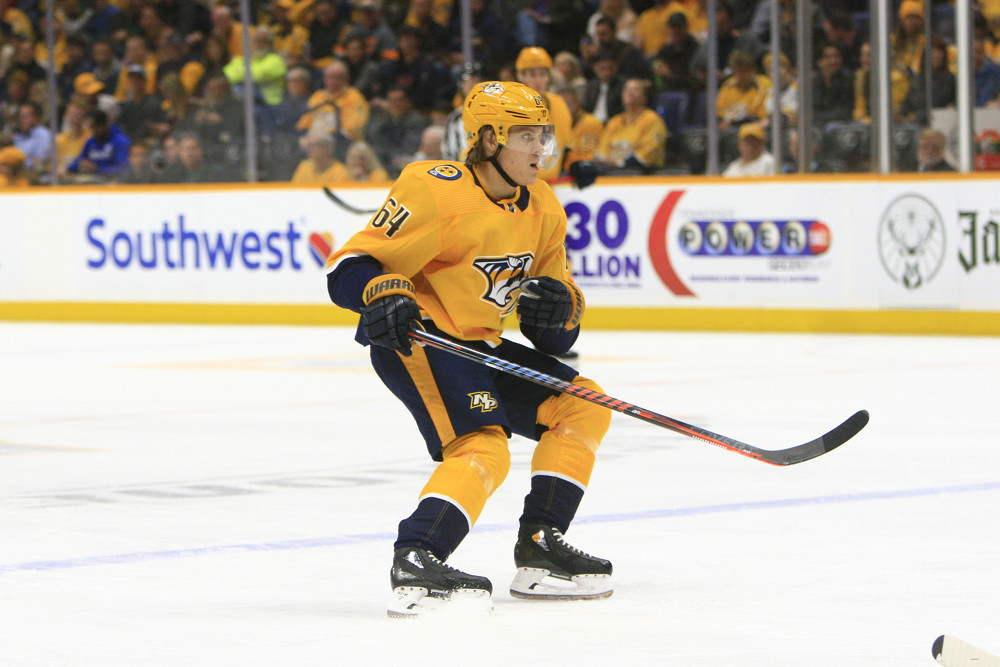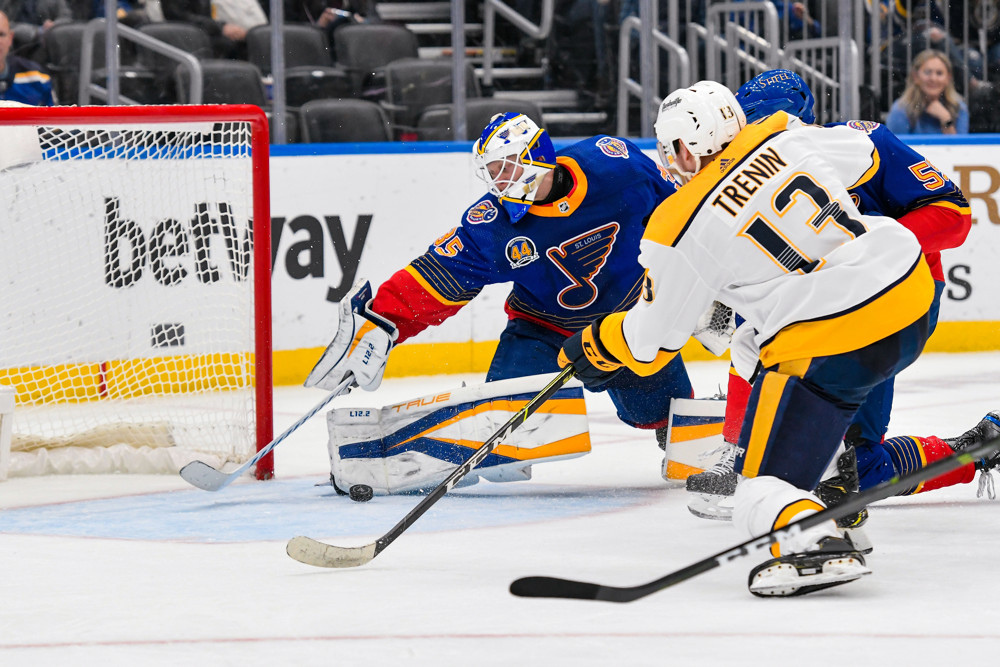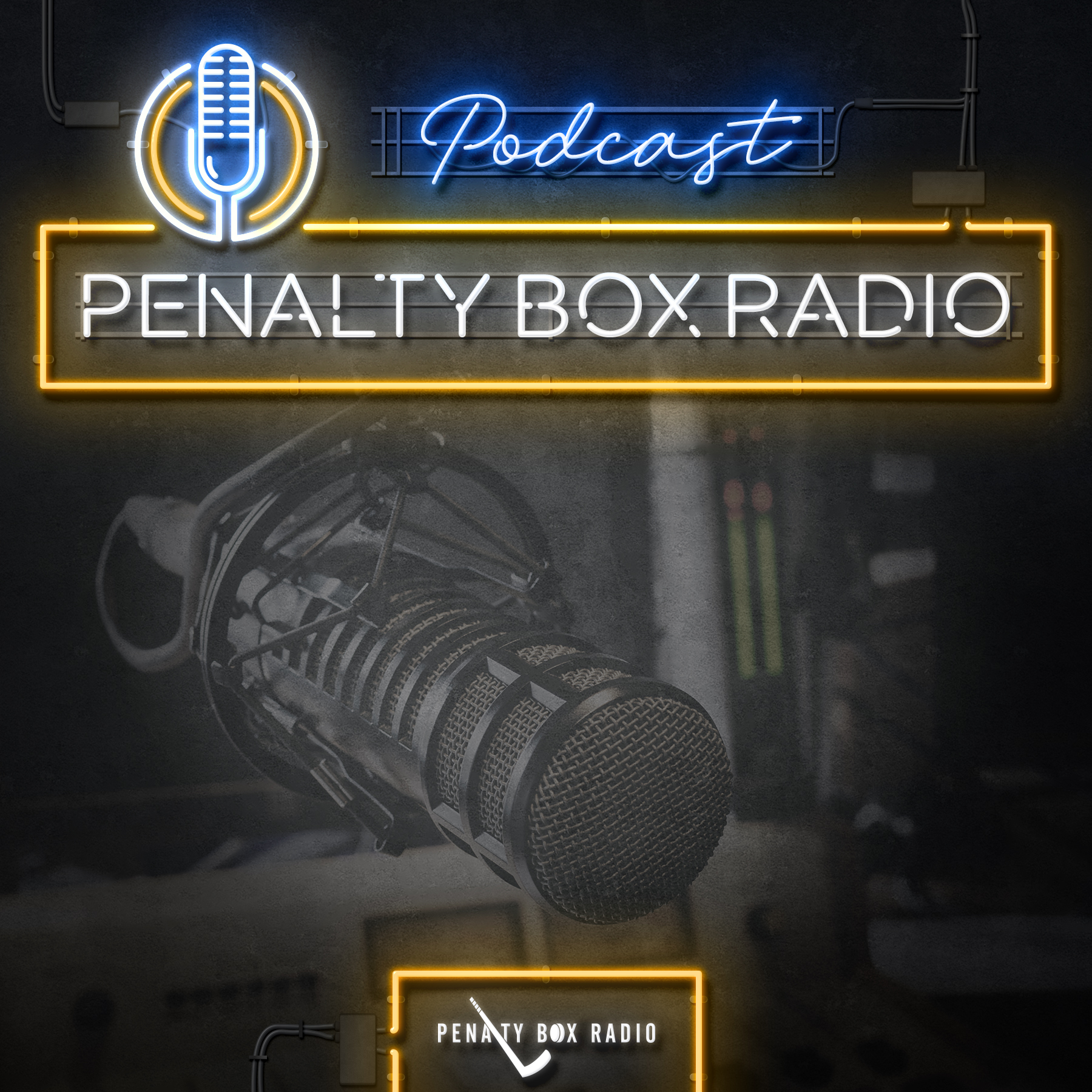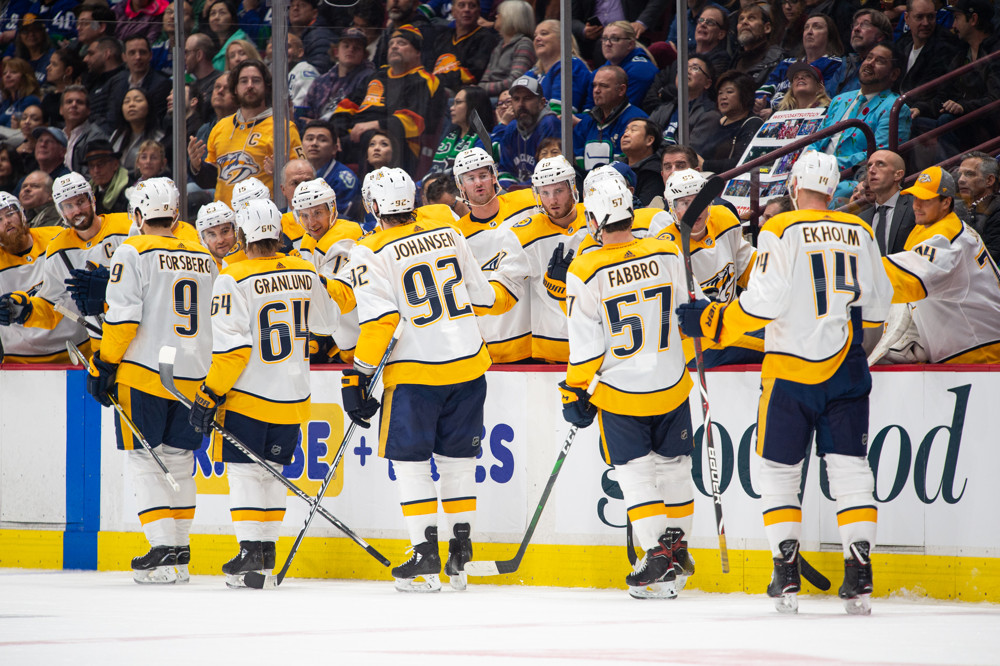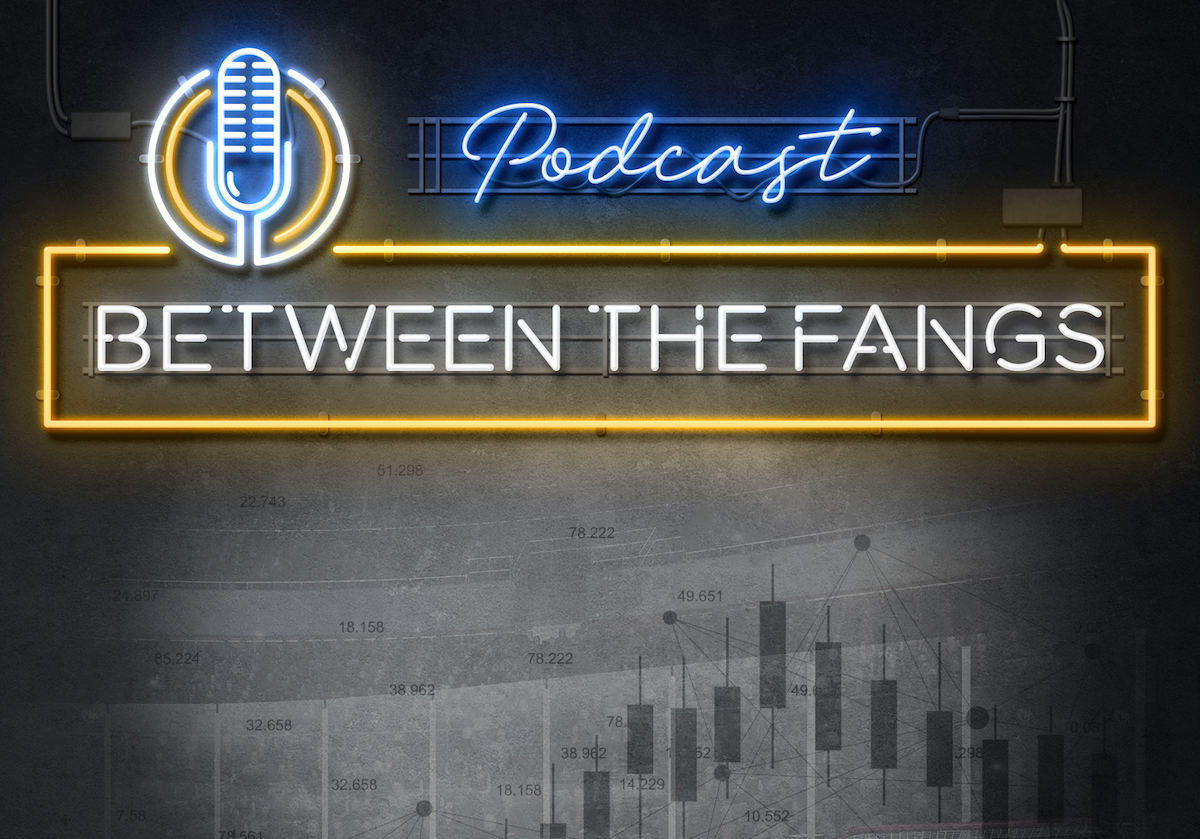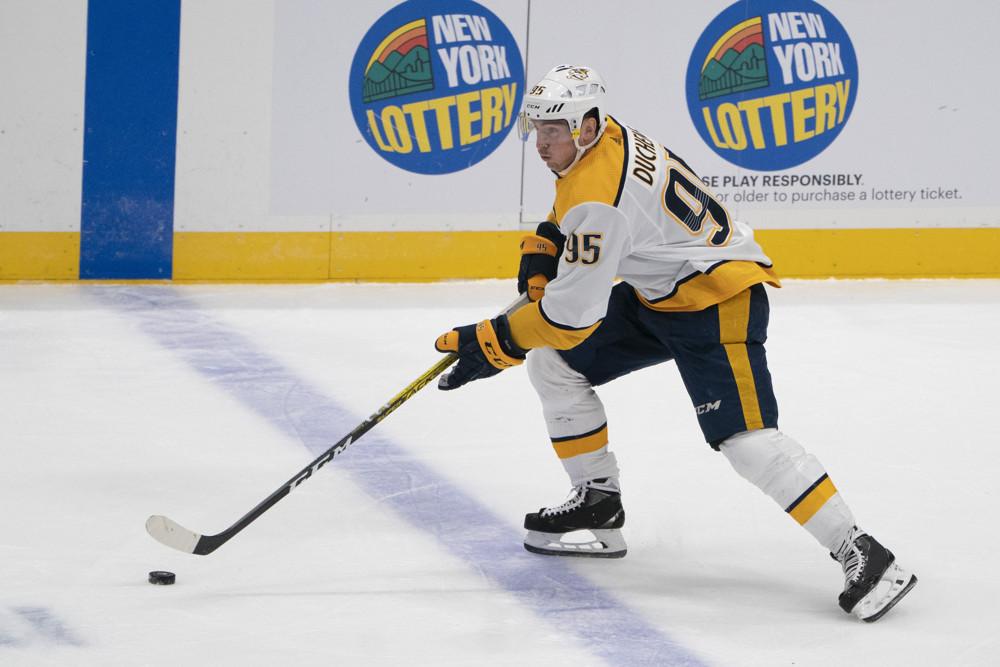
Mikael Granlund is a puzzling player. When he came over from Minnesota, Granlund was billed as a defensively competent winger who could put up 60 points in a season.
One description was that Granlund is comparable to Kevin Fiala if the latter hit his potential. I had my doubts though, Fiala is a run and gun player while Granlund seemed to thrive in a more deliberate, possession-based offense. Simply put, Fiala likes to play fast while Granlund likes to slow things down.
The hype was forgotten somewhat after Granlund donned the gold sweater. His performance declined as each game went on – from good to average to just plain bad. It wasn’t totally his fault though; an injured Kyle Turris was going through a slump and the line blender was on maximum speed. As the season came to a close, Granlund had only produced a meager one goal and five points in 15 games. I wrote it off. Coming to a new city with an ever-changing group of linemates is a difficult situation at best.

Fellow PBR stathead Michael Wade and I agreed that proper judgment could begin after 10-15 games into this season. We wanted to see what a healthy Granlund could do with consistent linemates, and it didn’t hurt that Matt Duchene and Filip Forsberg would be there for most of his time on ice.
So, after 15 games, where do things stand?
Yikes
Granlund currently sits in 15th place on Nashville’s roster with four points in 15 games. All four points have come at five-on-five, but only his two goals have been primary. To say that Granlund has been riding his linemates’ coat tails might even be an understatement.
From here on out, all stats will be at five-on-five.

There just doesn’t seem to be something that Granlund is doing exceptionally well. He’s ninth in goals per 60, 14th in assists per 60, and 15th in points per 60. I understand that Nick Bonino leads in two of these categories, but it’s not like Granlund is riding some cold streak.
The majority of Granlund’s numbers are either in line with or above his career average. He’s a positive possession player (his delta in shot attempts per 60 is +2.41, shots on goal is +1.13, and high danger chances is +0.5). Granlund’s simple underlying numbers are better than they have ever been, so why isn’t he scoring?
As I said earlier, it’s not a cold streak. Through 15 games, he’s shooting at 7.69% which isn’t much lower than his career average. Also, the Predators are currently shooting at 8.62% with Granlund on the ice, which is less than a percentage point below league average.
Perhaps the only thing that Granlund fans should hold on to is that his 2.2 individual expected goals lead the team, though it’s quite possible that this is affected by the NHL’s faulty shot location data.
The Issue

As I said before, Granlund has a certain style of play that he favors. He excels in a grinding, possession-based offense, which doesn’t exactly align with the Predators’ style. Filip Forsberg, Viktor Arvidsson, and Craig Smith are three of the better off the rush players in the NHL. Roman Josi is, for my money, the best puck mover this season. A team with these pieces will always lean towards fast-paced hockey.
Based on the transition data I’ve been collecting, it’s clear that Granlund just isn’t moving the puck well. He exited the zone 25 times with possession and either failed to exit the zone or dumped the puck 29 times through the first 13 games. Those are the worst numbers of any forward consistently in Nashville’s top six. While the top line’s puck movement took a huge hit when Forsberg went down, Granlund’s numbers remained consistent. It just so happens that consistent for him is bad.
As far as entering the zone goes, things aren’t much better. In the same 13 games as before, Granlund entered the offensive zone 20 times with possession and dumped it 32 times! That’s more than two dump-ins per game, much higher than his contemporaries.
Aside from transition data, a few other numbers popped out at me. In the 13 games I’ve tracked, Granlund attempted eight passes to the slot area and only connected on two of them. In my opinion, this is a result of Granlund being beaten along the boards. He’s won just 20 of the 52 (38.46%) of the puck battles he’s engaged in.
In fairness, his low success rate in puck battles is not unique to him. As a whole, the Predators are losing more puck battles than they’re winning this season – something that will likely become a bigger issue if not overcome quickly. It’s bad news when a perimeter player such as Granlund is losing these battles.
Square Peg, Round Hole?
I keep going over it in my head and I keep ending up at the same place. I don’t think Granlund fits in with how the Predators have designed their team. He’s a great talent who has succeeded in the past and likely will in the future, but I wonder if his current environment is stifling him. His counterparts Duchene and Forsberg are finding success in the quick rush-style system.
The overall combination has been lethal, but not as a result of Granlund’s contributions. It’s a bit telling when Forsberg and Duchene have 11 and 13 points, respectively, and Granlund has just four. Some of that has to do with the power play, but not enough to make me write off these concerns.
This is not to say that Granlund has been a liability, but he hasn’t exactly been a strength either. And when you pay a player 5.75 million while giving him first-class linemates and minutes, you cannot allow a mediocre return. As an illustration of this mediocrity, take a look at the RAPM chart from Evolving-Hockey.com (even strength on the left, power play on the right).
I mean, besides his even-strength CF/60, what’s remarkable about this player?
What To Do
So here’s the fun thing about writing analytics articles this early in the season, I don’t know what the solution is. I do trust that Granlund will naturally snap out of it, more or less. He’s a better player than his performance suggests, but I don’t think he’s deserving or good enough in the current system to receive the minutes he does.
This might sound bleak, but I’m not sure the Predators and Granlund can connect on the right wavelength. We’ll see what happens, but if the first 15 games are any indication, maybe it’s a good time to promote someone else. Who knows, maybe moving on from an unsustainably hot Nick Bonino could help bolster the back end and the middle six?
That’s for another article. The transition and slot passing data cited in this article are mine, but I’ll acknowledge naturalstattrick.com for the other data and Evoling-Hockey.com for the RAPM chart.


